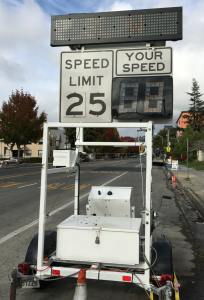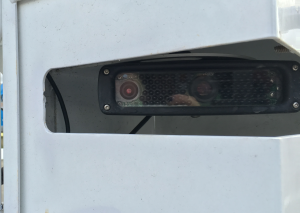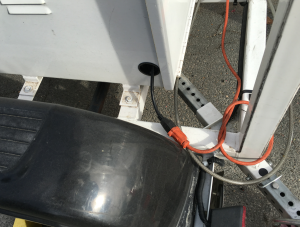As part of an effort to identify a suspect in kidnapping attempts near Willard Middle School in Berkeley, the Berkeley Police Department borrowed an automated license plate reader (ALPR) from the Northern California Regional Intelligence Center (NCRIC), the local fusion center.
The ALPR is part of a trailer that at first appears to be just a sign to get drivers to slow down. The ALPR consists of cameras facing cars driving towards and away from the trailer. The trailer uses Willard Middle School to power the license plate cameras and signs, using an electrical power cord that extends from the trailer to the school.
Berkeley Police Detective Scott Castle contacted the fusion center on October 20, two days after two reported kidnapping attempts near the middle school to request the mobile ALPR. See Berkeleyside for more coverage.
The license plate reader consists of four cameras, two in each direction. One camera captures an image of the license plate that is suitable for a computer to process into a format that the computer can recognize. The other camera captures an image of the vehicle and possibly the occupant(s) of the vehicle. The license plate readers appear to be 3M Mobile ALPR cameras. The trailer submits the captured images, which include a date/time stamp and geographic location information from a Garmin GPS, to a data warehouse maintained by the NCRIC fusion center. The NCRIC fusion center collects similar data from more than a dozen local law enforcement agencies and makes it available to dozens of local law enforcement agencies, plus the IRS, the US Air Force, UC San Francisco, DMV, FBI, DHS, Stanford University, and others.
The NCRIC retains all of the data collected, including the vehicle images, for at least a year, but may retain it for longer if the data is part of an investigation.


